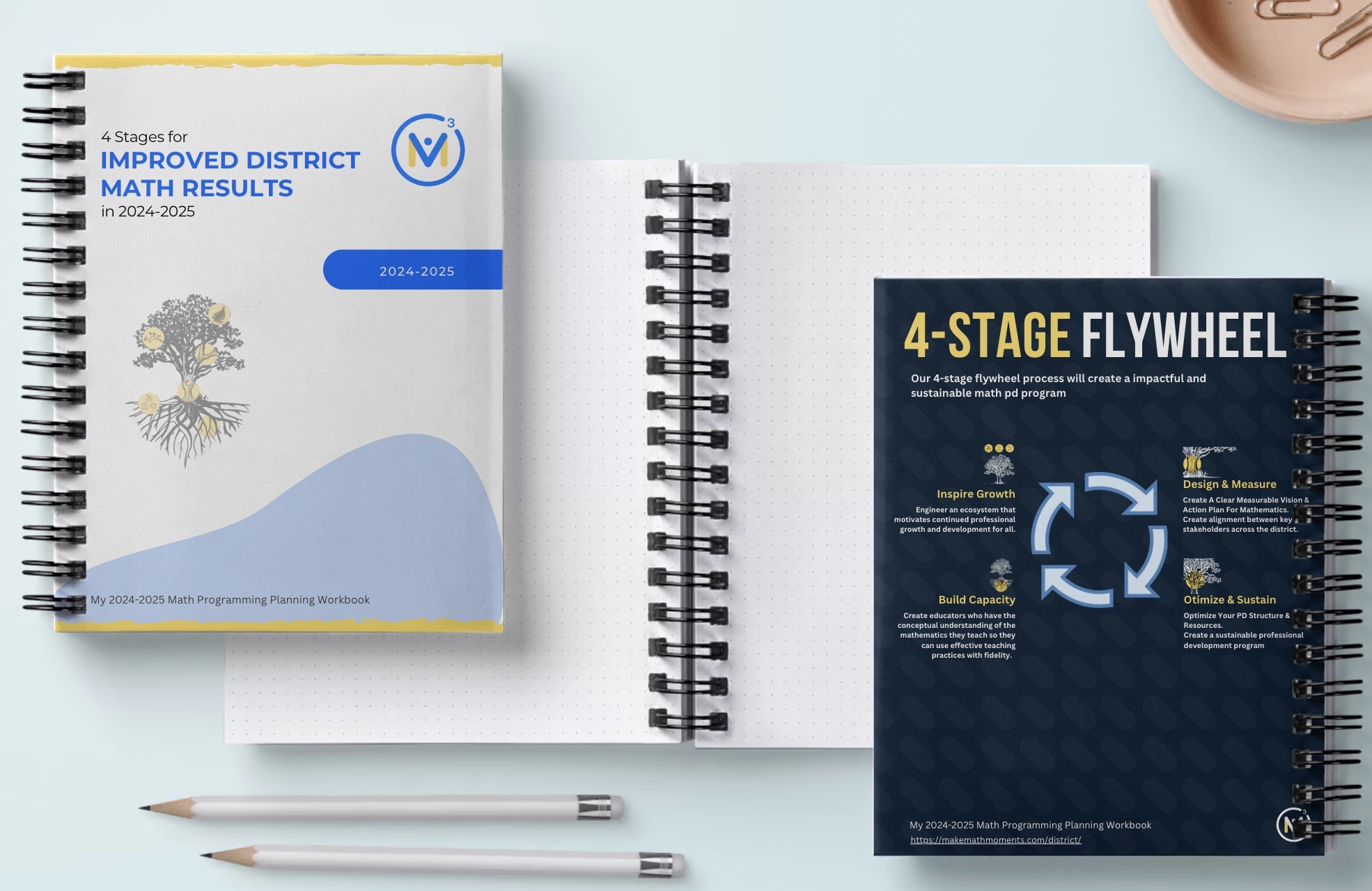Avoiding The Sunk Cost Fallacy in Math Education: Lessons Learned From Being Scammed Online

I was scammed online!
It was this post on a local Facebook Mom Swap group for Taylor Swift Tickets that got me:
“Selling four Taylor Swift tickets for Saturday show. Nov. 16th at Rodgers Center in Toronto at 7PM. Send me a message for more info.”
In hindsight there were so many red flags but at the time I couldn’t see them.
Now, it’s not like I just handed my money over immediately. I spent in total 8 hours in conversation with this person before being convinced this was not a scam. Having said that now, I did in fact send a complete stranger an e-transfer for a lot of money — and it was a scam.
I sent this scammer three e-transfers in total!
THREE!
Why would I send a transfer after I didn’t get the tickets the first time?
I believe the reasons lie behind the sunk cost fallacy and overconfidence.
Recognizing that these two factors were at play helped me come to terms with sending out money to a scammer and it has helped me become a better math coach and leader for mathematics planning.
Read the entire story here.
Here’s how.
Sunk Cost Fallacy
The sunk cost fallacy is a cognitive bias that leads individuals to continue an endeavour, or continue consuming or pursuing an option, due to the substantial resources (such as time, money, emotion, or effort) they have already invested in it, even when continuing is not the best course of action.
Sunk Cost Fallacy: Taylor Swift Scam.
Why did I continue to send the scammer money even though I didn’t receive the tickets?
I had sunk resources into:
- financial investment;
- emotional investment;
- time investment;
- effort investment ;
Here’s what happened:
After I told the ticket seller that I didn’t feel comfortable sending money to a stranger online we agreed that we could send smaller “installments”. I would send a transfer for two tickets and then they would send me the tickets. If all parties were satisfied then we would repeat.
Transaction 1: I sent a transaction for two tickets (financial investment). The seller sent me two tickets by personal email. The tickets were not transferred through Ticketmaster. I spent the next few hours “helping” this seller figure out how to transfer ownership of the tickets (effort investment) through Ticketmaster.
Transaction 2: There was an “unexpected” delay in the sending the two tickets through Ticketmaster (time investment). The delay was caused by a “transfer fee” which needed to be paid before the tickets could be released (emotional investment).
Transaction 3: The fee was actually a per ticket fee and the seller needed another payment before the two tickets could be released (financial investment).
After sending that payment (UGHHH!), of course, there was another fee!
This is where I stopped and realized this was a scam.
How We Need “Trip Wires” To Avoid The Sunk Cost Fallacy
The scammer capitalized on the fact that I had sunk money, time, effort, and emotion into this transaction. I remember thinking that “what’s another couple hundred dollars in a fee to give my three daughters this amazing experience?”
We need to be able to recognize when our endeavours are not yielding the intended results we had aimed for so we can save our resources for another day.
I needed a “trip wire”.
A “stop-loss”.
It’s an indicator, measurement tool, a wake-up call, a friend yelling: “FOR REAL MAN! COMMON”.
When you cross the trip wire it’s your emotionless signal to get out.
I was 50% sure this was a scam the entire time but still sent “bad money” after “bad money” because I didn’t want to admin to myself that I was 100% sure it was a scam. I’d have to admit to myself that I had sent willingly sent a scammer money through the internet.
If only I had made the decision to create a trip-wire from the start. My overconfidence in my abilities to spot a fake clouded my judgement for needing that trip wire.
Sunk Cost Fallacy: Mathematics Education Planning & Support
How can we avoid the sunk cost fallacy in our mathematics planning and support?
- What PD initiatives are you investing time, effort, money, and emotion into when you know it will not get the results you’re truly after in math classrooms?
- What curriculum resources do you continually fund when it doesn’t align with your vision and objectives for math education in your district?
What “trip wires” have you set up to measure the success of the support and programs you are currently engaging in? Did that book study this year help? Should you do it again? How do you know it “worked”
What do we continually do in our roles just because “it’s always been done that way?”
As a leader for mathematics pd support and programming we need to be critical of our decisions. Your time, money, effort, and emotion are valuable resources that you can’t afford to direct to areas that aren’t getting you closer to your goals.
Find your trip wires!
Optional: You can learn what truly matters in a school or district math program here and how to create objectives that get your closer to your goals.
Sunk Cost Fallacy: For Classroom Mathematics Teachers
Here are common pebbles we hear from classroom teachers (I’ve said these myself at one time or another):
- “I’m still starting every class with the “I do, we do, you do” model of math class because my students can’t be trusted to think on their own”;
- “Next year I’ll have time to learn topic X more deeply so I can teach it conceptually to my students”;
- “My grades have to be recorded and determined this way because that’s what we do at my district”;
These statements are rooted in the sunk cost fallacy. They are choices you are making that continually sink effort, resources, time, emotion into endeavours you know could be better but you continue to push them off hoping it will get better over time.
Optional: How can you set up trip wires so you are continually reminded to audit yourself on your existing practices? Do you really have to wait until the year is over before you change a practice?
Focus Your Math Professional Development On What Matters
Free Training + Planning Workbook

LESSONS TO MAKE MATH MOMENTS
Each lesson consists of:
Each Make Math Moments Problem Based Lesson consists of a Teacher Guide to lead you step-by-step through the planning process to ensure your lesson runs without a hitch!
Each Teacher Guide consists of:
- Intentionality of the lesson;
- A step-by-step walk through of each phase of the lesson;
- Visuals, animations, and videos unpacking big ideas, strategies, and models we intend to emerge during the lesson;
- Sample student approaches to assist in anticipating what your students might do;
- Resources and downloads including Keynote, Powerpoint, Media Files, and Teacher Guide printable PDF; and,
- Much more!
Each Make Math Moments Problem Based Lesson begins with a story, visual, video, or other method to Spark Curiosity through context.
Students will often Notice and Wonder before making an estimate to draw them in and invest in the problem.
After student voice has been heard and acknowledged, we will set students off on a Productive Struggle via a prompt related to the Spark context.
These prompts are given each lesson with the following conditions:
- No calculators are to be used; and,
- Students are to focus on how they can convince their math community that their solution is valid.
Students are left to engage in a productive struggle as the facilitator circulates to observe and engage in conversation as a means of assessing formatively.
The facilitator is instructed through the Teacher Guide on what specific strategies and models could be used to make connections and consolidate the learning from the lesson.
Often times, animations and walk through videos are provided in the Teacher Guide to assist with planning and delivering the consolidation.
A review image, video, or animation is provided as a conclusion to the task from the lesson.
While this might feel like a natural ending to the context students have been exploring, it is just the beginning as we look to leverage this context via extensions and additional lessons to dig deeper.
At the end of each lesson, consolidation prompts and/or extensions are crafted for students to purposefully practice and demonstrate their current understanding.
Facilitators are encouraged to collect these consolidation prompts as a means to engage in the assessment process and inform next moves for instruction.
In multi-day units of study, Math Talks are crafted to help build on the thinking from the previous day and build towards the next step in the developmental progression of the concept(s) we are exploring.
Each Math Talk is constructed as a string of related problems that build with intentionality to emerge specific big ideas, strategies, and mathematical models.
Make Math Moments Problem Based Lessons and Day 1 Teacher Guides are openly available for you to leverage and use with your students without becoming a Make Math Moments Academy Member.
Use our OPEN ACCESS multi-day problem based units!
Make Math Moments Problem Based Lessons and Day 1 Teacher Guides are openly available for you to leverage and use with your students without becoming a Make Math Moments Academy Member.
Partitive Division Resulting in a Fraction
Equivalence and Algebraic Substitution
Represent Categorical Data & Explore Mean
Downloadable resources including blackline masters, handouts, printable Tips Sheets, slide shows, and media files do require a Make Math Moments Academy Membership.
Use our OPEN ACCESS multi-day problem based units!




